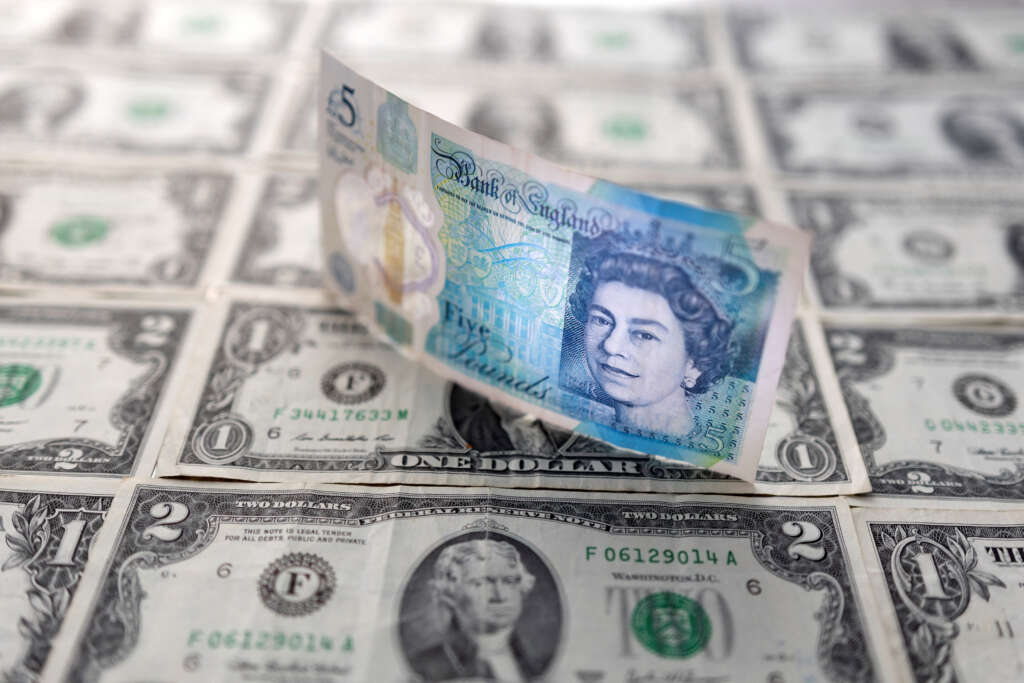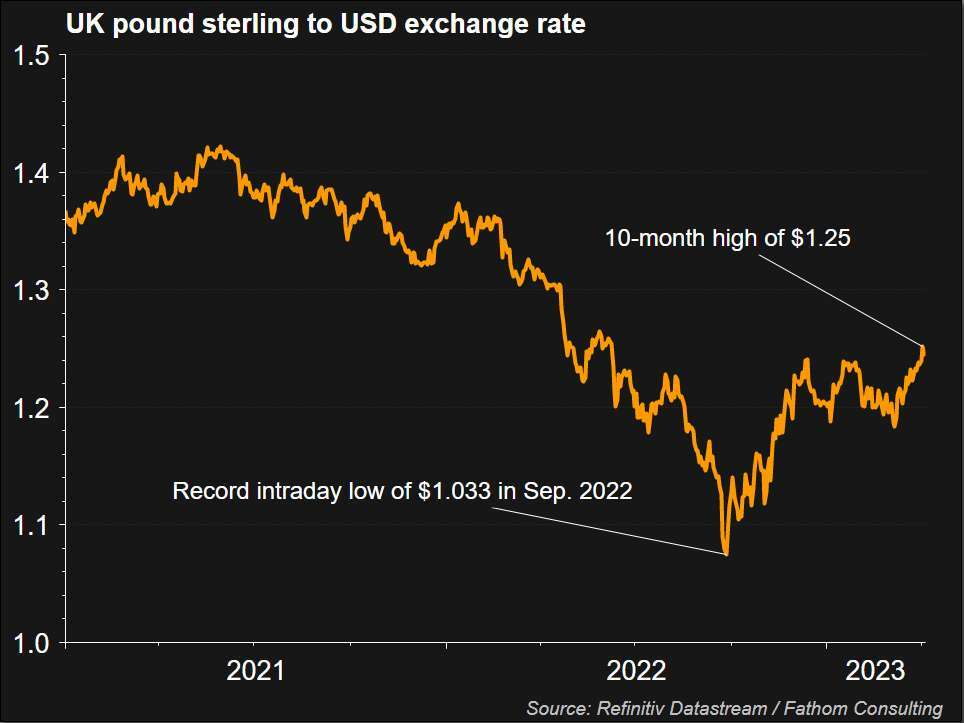
By Harry Robertson
LONDON (Reuters) – The pound hovered just below its highest level in 10 months on Thursday as investor focus turned to Friday’s U.S. jobs numbers.
Sterling was last flat at $1.246, having touched its highest level since June – $1.253 – on Tuesday.
Markets were subdued across the board on Thursday ahead of the release of the U.S. non-farm payrolls employment data on Friday.
It will be a key factor in the Federal Reserve’s next interest rate decision and could cause volatility in markets.
“There is a semblance of calm about today’s trading session in the absence of any major data,” said Simon Harvey, head of FX analysis at Monex Europe.
“Price action instead is likely to be determined by expectations for tomorrow’s payrolls print.”
The U.S. jobs market has remained resolutely strong, keeping the pressure on the Fed to raise interest rates to tackle inflation. Yet analysts expect the U.S. to have added 239,000 jobs in March, a slowdown from February’s 311,00 figure.
The pound was also little changed against the euro, with a euro changing hands for 87.51 pence.
Sterling has risen dramatically after plunging to a record low of $1.033 in September in the wake of then-Prime Minister Liz Truss’s disastrous budget.
GRAPHIC – Pound vs. USD

A stronger-than-expected economy, aided by falling energy prices, has helped the pound. As has a recent drop in the dollar as investors worry about the collapse of Silicon Valley Bank and Signature Bank and the implications for the U.S. economy.
With British inflation unexpectedly jumping to 10.4% in February, investors broadly think the Bank of England will raise interest rates further. They’re less sure about the Fed.
Expectations of higher interest rates have helped the pound, by making sterling-denominated fixed income investments in Britain look relatively more attractive.
In a thin calendar, data from Halifax showed that British house prices rose for a third month in a row in March. However, separate figures showed that house-building in Britain fell at the sharpest pace since May 2020 last month.
The dollar index, which tracks the currency against six peers, was last up 0.07% at 101.94. It stood at a three-month high of 105.88 in early March.
(This story has been corrected to give the non-farm payroll numbers, not private payroll numbers, in paragraph)
(Reporting by Harry Robertson; Editing by Robert Birsel)


